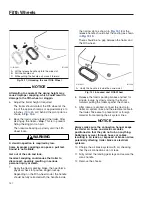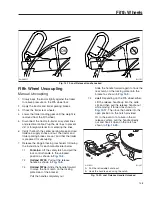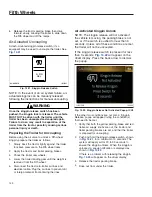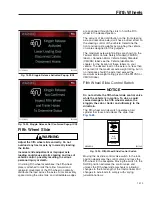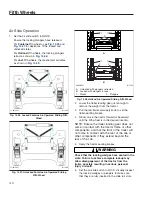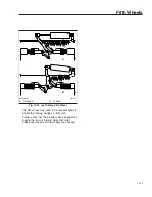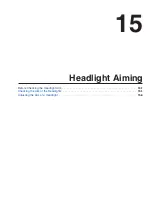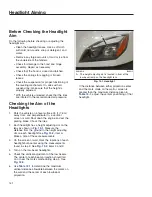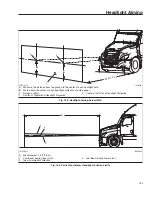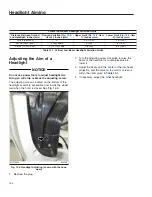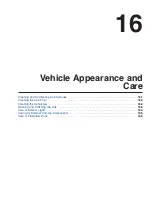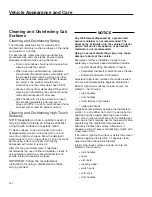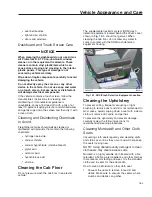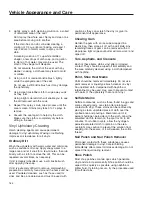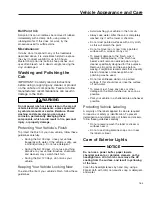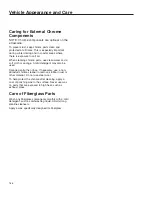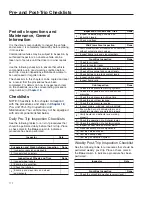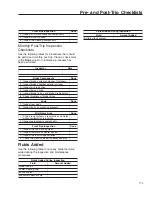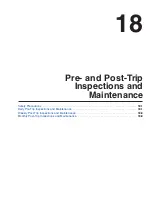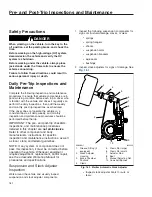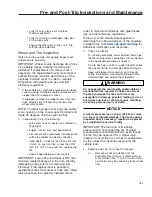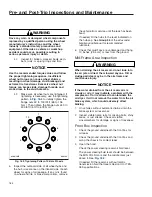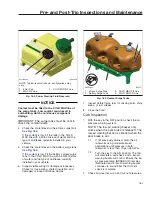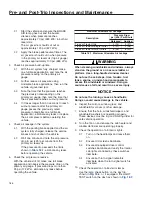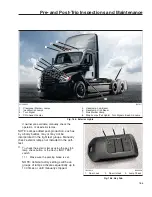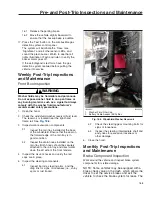
2.
Lightly spray a cloth cleaning solution on a soiled
or discolored area of the seat.
Don’t spray the whole seat. Spray and clean one
area before moving onto another.
If the stain has an odor, consider creating a
solution of 1/4 cup (60 mL) baking soda and 1
cup (250 mL) of warm water to spray on the
stain.
A cleaning solution of 1 cup white distilled
vinegar, a few drops of dish soap, and a gallon
(4 liters) of hot water may also be used. The
smell of the vinegar will dissipate.
Do not saturate the cloth of the seat with any
cleaner; soaking a cloth seat may lead to mold
or mildew.
3.
Using a soft or medium bristle brush, lightly
scrub the sprayed area of the seat.
Do not use a stiff bristle brush as it may damage
the upholstery.
4.
Use a clean microfiber cloth to wipe away suds
as they form.
Using a light colored cloth will enable you to see
the dirt removed with the suds.
5.
Repeat this spray, scrub, wipe process until the
area is clean. Stains may take 3 to 7 sprays to
remove.
6.
Vacuum the seat again to help dry the cloth.
Make sure the cloth is completely dry before
sitting in the seat.
Vinyl Upholstery Cleaning
Harsh cleaning agents can cause permanent
damage to vinyl upholstery. Waxing or refinishing
improves soil resistance for all vinyls.
Ordinary Dirt
Wash the upholstery with warm water and mild soap,
such as saddle or oil soap. Apply soapy water to a
large area and let it soak for a few minutes, then rub
briskly with a cloth to remove the dirt. This can be
repeated several times, as necessary.
If dirt is deeply imbedded, use a soft bristle brush
after applying the soap.
If dirt is extremely difficult to remove, wall-washing
preparations normally found around the home can be
used. Powdered cleaners, such as those used for
sinks and tiles, are abrasive and must be used with
caution as they can scratch the vinyl or give it a
permanent dull appearance.
Chewing Gum
Harden the gum with an ice cube wrapped in a
plastic bag, then scrape it off with a dull knife. Any
remaining traces of gum can be removed with an
all-purpose light oil (peanut butter will also work) and
wiped off.
Tars, Asphalts, and Creosote
Each of these items stains vinyl after prolonged
contact. They should be wiped off immediately and
the area carefully cleaned, using a cloth dampened
with naphtha.
Paint, Shoe Heel Marks
Paint should be removed immediately. Do not use
paint remover or liquid-type brush cleaner on vinyl.
An unprinted cloth, dampened with naphtha or
turpentine may be used. Use care to prevent contact
with parts of the upholstery that are not vinyl.
Sulfide Stains
Sulfide compounds, such as those found in eggs and
some canned goods, can stain after prolonged
contact with vinyl. These stains can be removed by
placing a clean, unprinted piece of cloth over the
spotted area and pouring a liberal amount of 6
percent hydrogen peroxide onto the cloth. Allow the
saturated cloth to remain on the spot for 30 to 60
minutes. For stubborn spots, allow the hydrogen-
peroxide saturated cloth to remain on the area
overnight. Use caution to prevent the solution from
seeping into the seams, or it will weaken the cotton
thread.
Nail Polish and Nail Polish Remover
Prolonged contact with these substances causes
permanent damage to vinyl. Careful blotting
immediately after contact minimizes damage. Do not
spread the liquid during removal.
Shoe Polish
Most shoe polishes contain dyes which penetrate
vinyl and stain it permanently. Shoe polish should be
wiped off as quickly as possible using naphtha or
lighter fluid. If staining occurs, try the procedure used
for sulfide stains.
Vehicle Appearance and Care
16.3
Summary of Contents for PX113064S T 2016
Page 4: ......
Page 10: ......
Page 18: ......
Page 58: ......
Page 86: ......
Page 112: ......
Page 122: ......
Page 142: ......
Page 154: ......
Page 155: ...12 Steering System Power Steering System 12 1...
Page 158: ......
Page 159: ...13 eAxle eAxle 2 Speed Transmission 13 1...
Page 176: ......
Page 190: ......
Page 202: ......
Page 222: ......
Page 223: ...20 Emissions Information Noise Emissions 20 1 Greenhouse Gas Emissions 20 1...
Page 229: ......
Page 236: ......

